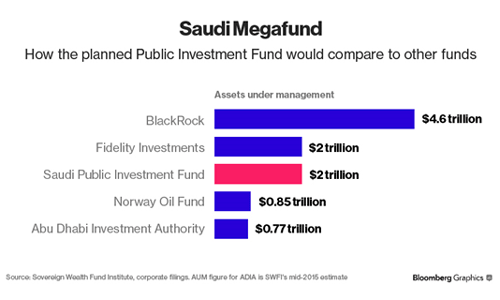Big news from Riyadh late last week. The Kingdom of Saudi Arabia is making tangible preparations for life after oil. That doesn’t mean they expect oil to go the way of the dinosaurs. Oil will remain a critical part of the Saudi economy and the world. But things are changing. How?
Deputy Crown Prince Mohammed bin Salman – the song of the king – held a five-hour interview with Bloomberg last week. He announced the creation of a $2 trillion Public Investment Fund (PIF). The fund would diversify the kingdom’s assets so that it’s not so reliant on crude oil. The fund would be larger than the combined market value of Google, Apple, Microsoft, and Berkshire Hathaway.
He also followed up on a story I reported on earlier in the year, the initial public offering (IPO) of shares in Saudi Aramco. Selling the public a share in the prized asset of the kingdom tells you something. But what? Do the Saudis need the cash? Are they planning for life after oil?
Well, the Aramco IPO won’t happen until next year at the earliest and more likely in 2018. And Bloomberg reports the kingdom won’t sell more than 5% of the company. But turning Aramco into an industrial conglomerate is easily the largest structural change to the Saudi strategy since the kingdom was founded in 1932.
From the beginning, the marriage of Saudi supply with US demand has been the key driver in the world’s energy markets. And, arguably, in geopolitics and markets. The global “dollar standard” is really a “petrodollar” standard. With the Saudi shift, will that change?

Category: Geopolitics


